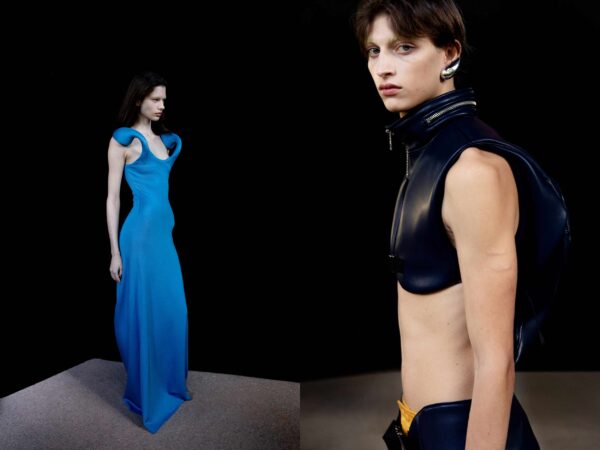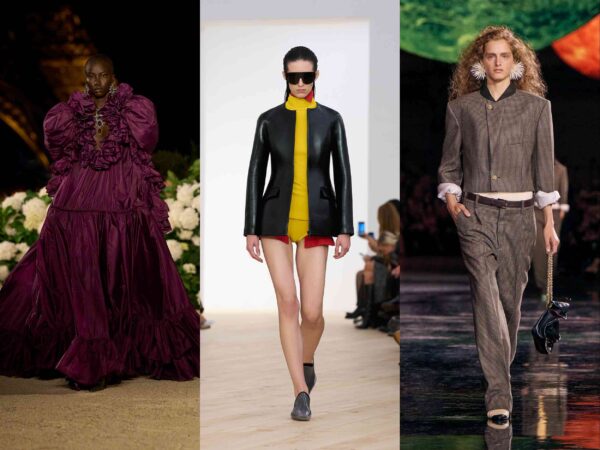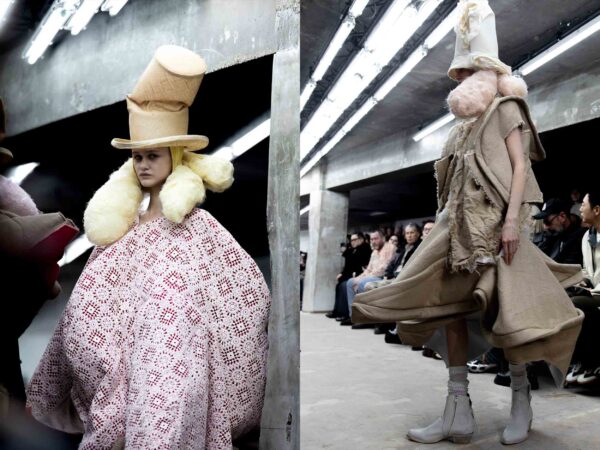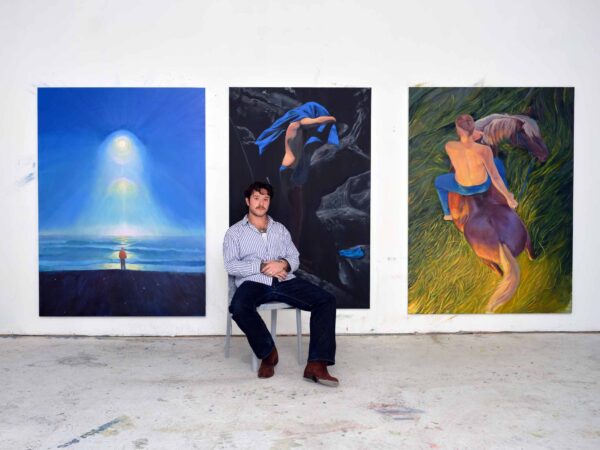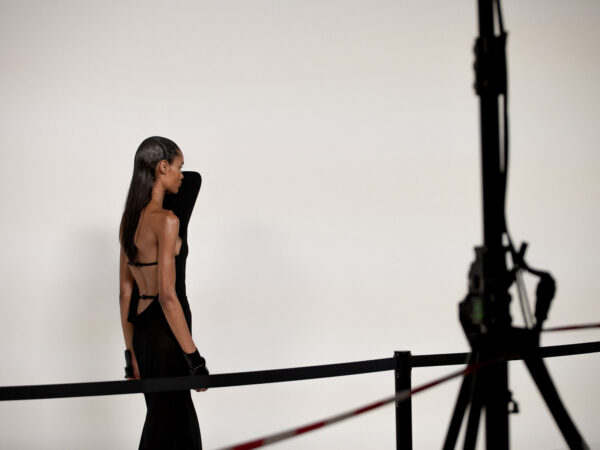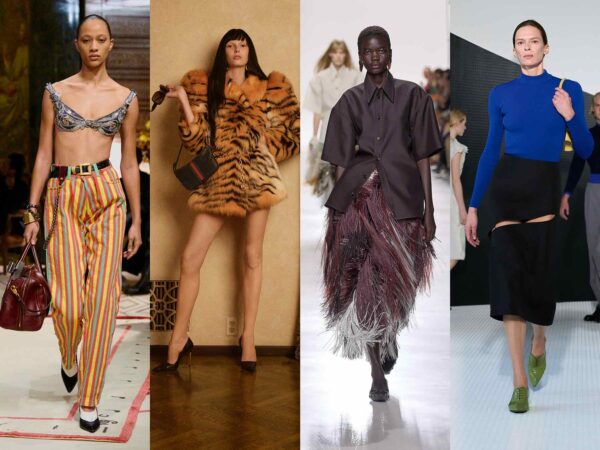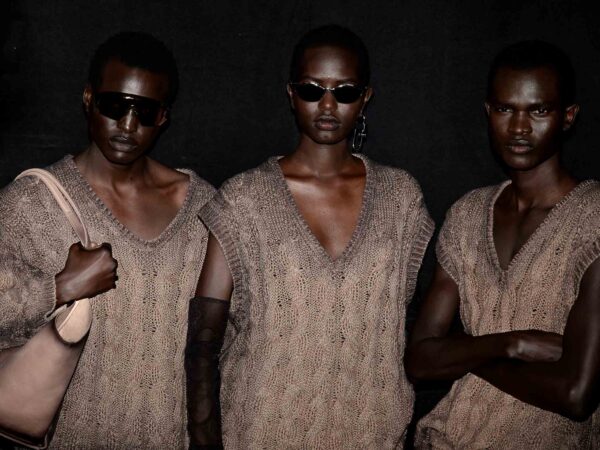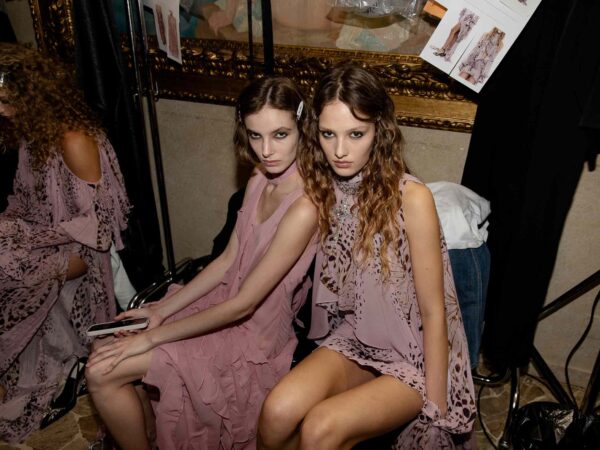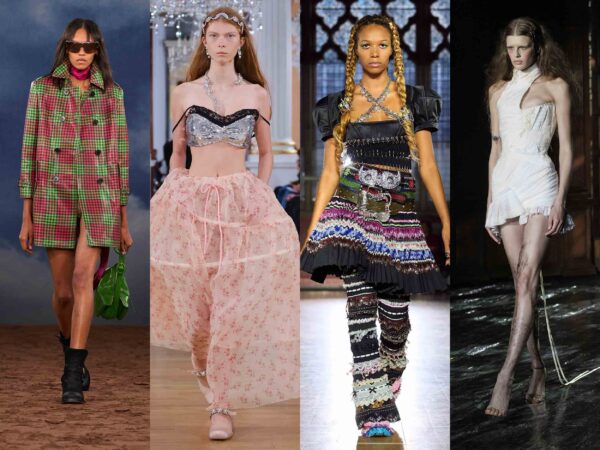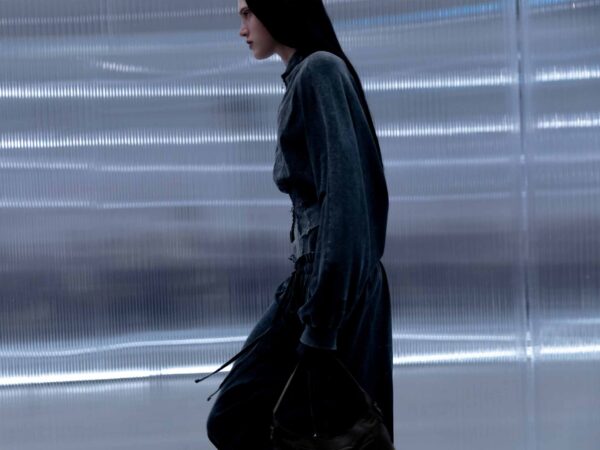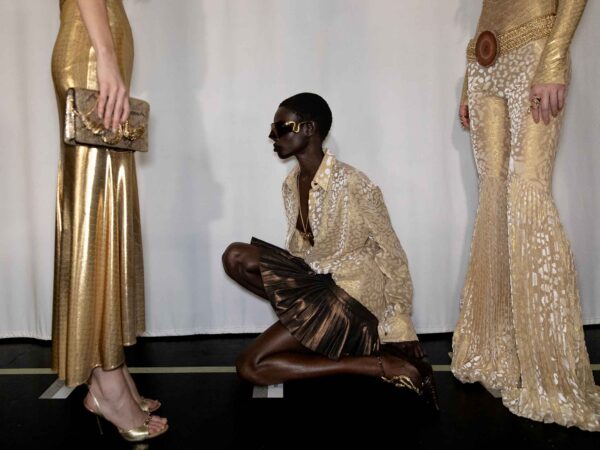
Even though she only just recently graduated from Parsons, Solange and Issa Rae are already among the fashion designer's celebrity admirers.
Shanel Campbell may be a fresh graduate from the MFA program in fashion apparel and design at Parsons, but she’s already launched her own eponymous line Shanel, which is embraced by the likes of Solange and Issa Rae. On September 5 the New York-based designer, who is also a professor at Parsons, will independently debut her new collection. Document spoke with Campbell about manipulating vintage clothing, growing up in the Bronx, and how teaching informs her practice.
Document—What has this past year been like for you after your Parsons MFA collection? What are you working on now?
Shanel Campbell—Immediately following my MFA collection, I took a break from designing for myself and started teaching seniors within the Systems and Society pathway at Parsons School of Design. I needed to take a step back and consider if I really wanted to begin working on my own brand or begin working for another brand alongside being a professor. After some time, I found myself coming up with a bunch of ideas that I had this strong desire and drive to execute. Earlier this year I started developing my next collection that I plan to debut September 5th.
Document—How do you usually go about finding source material for your collections?
Campbell—The next collection is a mental purge of all the ideas, techniques, and experiences that have crossed my mind up to this year. There is no single grounding concept to this collection but rather it is a combination of my experiences as a black woman and a designer, picking up industrial influences from her father, and as an artist interested in the interplay between ghetto and glamour.
Document—What is your process for designing and constructing a piece? Has it changed since graduating?
Campbell—My process usually stems from a concept related to my personal experience or the black experience or both. From there I find every related image, book, movie, or documentary related to this concept. I have a vivid imagination so when I dream up something I can’t stop thinking about how it would look completed until I at least mock up a pattern and sample.
“In my most frustrating moments I think that if I can exhibit something that inspires a little black girl to be creative or leaves her feeling beautiful and represented in some capacity, then I’ll have fulfilled my purpose as a fashion designer.”
Document—Do you work alone or do you collaborate with other designers, artists, or students?
Campbell—For my debut collection I am collaborating with hair stylists, makeup artists, photographers, graphic designers, and models of color to execute my vision. I consider the team I sought out for my collection a collaboration rather than a booking because there is no possible way I would be able to create the elaborate scene I am thinking of without assembling this team of diverse creatives.
Document—Who do you design for?
Campbell—I design with black women in mind. In my most frustrating moments I think that if I can exhibit something that inspires a little black girl to be creative or leaves her feeling beautiful and represented in some capacity, then I’ll have fulfilled my purpose as a fashion designer. I have a couple women in mind that I would love to wear my pieces. I am still waiting on Erykah Badu, Lauryn Hill, Missy Elliot, Tierra Whack, cupcakKe, Kelela, Beyoncé, Syd, and Lil’ Kim to hit me up. You have to put the energy out there to make shit happen.
Document—Does your own daily style have any relation to your design practice?
Campbell—Most of my new work is a manipulation of my favorite wardrobe pieces seen through the filter of my current concept. I love collecting vintage clothing and moving them around my body until I can see them in a different way than intended. From there I think, how can my concept and research work with this garment exploration?
Document—Have you always had the intention of starting your own line?
Campbell—I’ve wanted to start my own line since my senior year of undergrad five years ago. I’ve always felt very particular about the work I want to put into the world and am passionate about doing things my own way.
Document—Do you see yourself working within the traditional Spring/Summer Fall/Winter fashion schedule?
Campbell—I’ve considered working within the two-season fashion schedule but then I looked at my favorite executions of creative work other than fashion over the last few years. You look at a successful music artist and usually they will put out one album a year at best. They constantly edit this body of work until it is something they can truly say they are proud of. I wanted to apply the same mindset to fashion. I don’t want to stunt my creativity with a deadline and a look count. I feel that if I work by the two to four season fashion schedule I wouldn’t be able to surround myself in the things that inspired me in the first place.
“As an adult I have stopped giving a shit how people categorize my interests and methods of artistic expression.”
Document—Are you learning things as a professor that you did not as a student?
Campbell—My technical skills have definitely improved. It is one thing to learn and execute something for yourself and an entirely different and much more complicated thing to help someone visualize and execute an idea they have in their head. When you are designing for yourself you can choose to rise to the challenge of execution and trial and error or you can simply mold your design and construction efforts to suit your current skill set. As a professor you have to extract an idea that someone may have inside them and help them make it reality. I also am very aware of what I ask of my students and consider bringing these foundations and frameworks into my own practice.
Document—How has living and working in New York influenced your practice?
Campbell—I grew up in the Bronx, near the second to last stop on the 2 train, so I was surrounded entirely by Caribbeans and African Americans. Every single day I would walk past beauty supply stores filled with fake hair, real hair, and cases upon cases of fake silver and gold earrings, rings, and chains. There were African hair braiding shops on every corner packed with posters of cornrow techniques in the windows. I would follow my cousin to the nail shop when I was little and stare at the wall of two-inch premade nail designs for people looking to get acrylics. I always wanted long ornate nails, but my mom hated them. Now that I’m old enough to get them myself they would make it impossible for me to sew. I wore braids, beads, barrettes, and bubbles all over my head when I was little. I may have not have realized the impact these images had on my creativity then, but I definitely see how my surroundings have influenced my current practice. There were a lot of elements of my environment that certain people considered ghetto and I always wondered what made something ghetto and something not. Why was one form of creative expression considered to be tacky while others sophisticated and glamorous? Was one thing ghetto just because it was associated with black culture? Who decided the standard for sophisticated and refined artistic expression? Some black people themselves (including me at times) are afraid of associating themselves with certain types of music, items, movies, books, clothing, jewelry, hairstyles, makeup, and nail styles just because it may or may not be considered ghetto. As an adult I have stopped giving a shit how people categorize my interests and methods of artistic expression and I hope every black person in America can eventually feel the same way.
Document—Having people like Solange, Issa Rae, Ciara, and Teyana Taylor wear your designs is a huge accomplishment. What does this mean for your line and what has this meant for you personally?
Campbell—Having these extraordinarily talented black women wearing my work reaffirms that I am doing exactly what I need to be doing with my life. I have small moments where I am very unsure about fashion, but it is recognition like this that keeps me on track.
Document—What advice do you have for younger designers? Are there any points you repeatedly come back to when you are teaching?
Campbell—My advice to young designers is to be true to yourself. In an industry that is already so overcrowded you need to be sure of yourself and your story. I always find that I am most successful and passionate about work that is very personal and representative of my experience. If you ever find yourself stuck or insecure about what you are putting out into the world just remember who you are, where you are from, and what you really care about. My co-professor at Parsons, Brendan McCarthy, constantly reiterates these questions. Although they are simple, they have motivated me and my students to work towards outcomes that are important to us.
Document—You’ve previously said that representation cannot be “a prop for [your] own work.” How do you balance talking about your design practice as something that is at its core inclusive, and as you have expressed before, representative of black women, without an entry level narrative of ‘representation’ or ‘inclusion’ dominating conversations about your work which investigates and comments on more than this?
Campbell—I think it would depend on the person I am speaking to. For certain people my work will be exciting because it’s inclusive of black women and the black female experience in a society that tends overlook us. For other people my work will be exciting because I make dope clothes that emphasize the female figure by using strong rugged materials. Some may find it interesting how I interpret my research and interests. Whatever excites people about my work I am happy with. Whatever resonates with you is cool with me.


